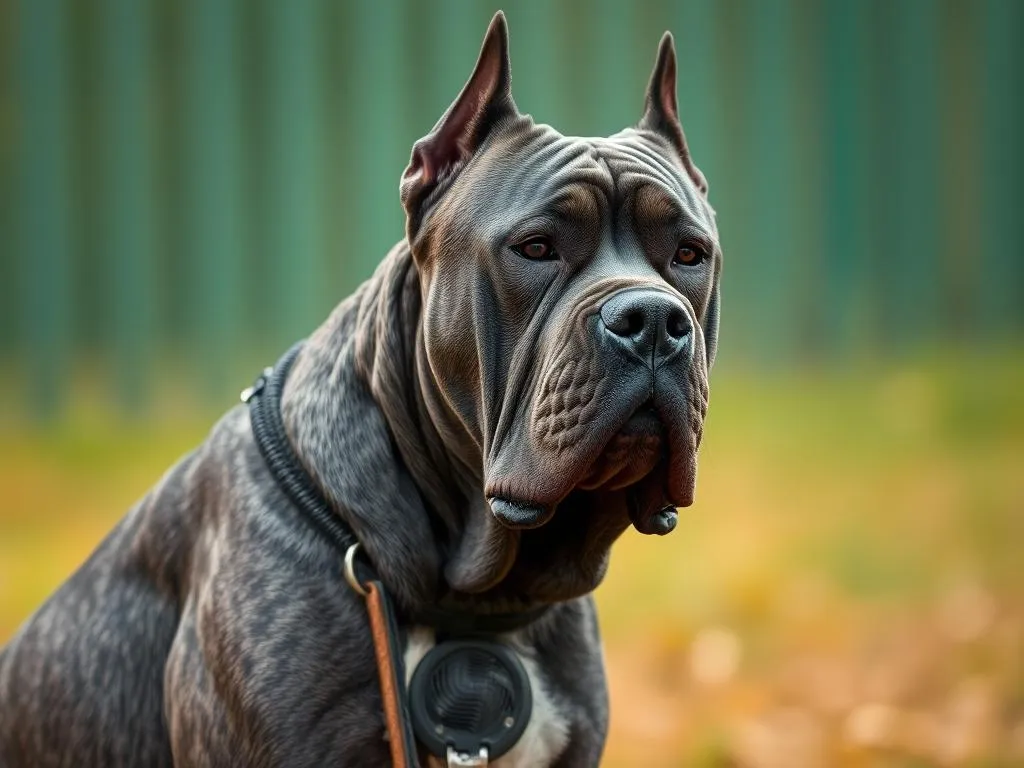
Introduction
The Cane Corso is a majestic breed with a rich history and a strong presence. Known for their loyalty and protective instincts, these dogs make excellent companions for families and individuals alike. Understanding the characteristics and needs of various dog breeds, especially a unique color variation like the blue brindle Cane Corso, is vital for potential owners. This comprehensive guide will delve into the history, characteristics, care, and other vital aspects of the blue brindle Cane Corso, ensuring you have all the information necessary to make an informed decision about this remarkable breed.
History of the Cane Corso
Origins
The Cane Corso has ancient roots that trace back to Italy, where they were bred as working dogs. Their ancestors are believed to be the Roman war dogs, known for their strength and courage. These dogs were used in battle and later evolved to become versatile hunting and guarding companions.
Breed Development
Throughout the centuries, the Cane Corso has maintained its role as a protector and hunter. They have been used for various tasks, from guarding livestock to hunting large game. Their development has been influenced by the needs of their owners, leading to the robust and loyal companions we see today.
Recognition
The Cane Corso has gained official recognition from various kennel clubs worldwide, including the American Kennel Club (AKC). Breed standards have been established to ensure that the characteristics and traits of this noble breed are preserved for future generations.
Characteristics of the Cane Corso
Physical Attributes
The Cane Corso is a large and muscular dog, typically weighing between 90 to 120 pounds and standing 24 to 28 inches tall at the shoulder. Their coat is short and dense, with various color variations, including the striking blue brindle. Distinctive features include a broad head, strong jaws, and a confident stance, making them an imposing presence.
Temperament
Known for their loyalty and protective instincts, Cane Corsos are highly devoted to their families. They are intelligent and eager to please, making them relatively easy to train. They tend to be good with children and can be gentle companions when properly socialized. However, their protective nature means they may be wary of strangers, making early socialization essential.
The Blue Brindle Color Variation
Genetics of Blue Brindle
The blue brindle coloration is a unique genetic trait that occurs when a dog has a base coat of blue with dark stripes. The brindle pattern is caused by the interaction of two genes, resulting in this stunning and sought-after color variation. Understanding the genetics behind the blue brindle Cane Corso can help potential owners appreciate the uniqueness of this breed.
Aesthetic Appeal
The blue brindle Cane Corso is particularly admired for its striking appearance. The combination of the blue base and dark stripes creates a visual effect that stands out among other color variations. Many dog enthusiasts are drawn to this color due to its rarity and beauty, making it a popular choice among potential owners.
Rarity and Availability
While the blue brindle Cane Corso is highly sought after, it is essential to be aware of breeders’ practices. The demand for this color variation can sometimes lead to unethical breeding practices. It is crucial to find reputable breeders who prioritize the health and temperament of their dogs over aesthetics.
Care and Maintenance
Nutrition
Proper nutrition is key to maintaining the health of a Cane Corso. They require a balanced diet rich in proteins, healthy fats, and essential nutrients. Recommended dog food brands for optimal health include high-quality options that list meat as the first ingredient. Regular feeding schedules and portion control are crucial for preventing obesity, which can lead to health issues.
Exercise Requirements
Cane Corsos are energetic dogs that require daily exercise to maintain both physical and mental health. They benefit from at least 60 minutes of exercise each day, which can include walks, playtime, or engaging in dog sports. Recommended activities include fetch, agility training, and obedience exercises to keep them stimulated.
Grooming
The grooming needs of a Cane Corso are relatively low due to their short coat. Regular brushing helps reduce shedding and keep their coat healthy. Bathing should be done as necessary, typically every 4-6 weeks, to maintain cleanliness and skin health. Check their ears and nails regularly to ensure they are clean and trimmed.
Training the Cane Corso
Importance of Early Training
Early training and socialization are crucial for a Cane Corso. These dogs thrive on structure and guidance, which helps them become well-rounded companions. Socialization exposes them to various environments, people, and other animals, reducing the likelihood of behavioral issues later in life.
Effective Training Techniques
Positive reinforcement methods are the most effective way to train a Cane Corso. Rewarding good behavior with treats, praise, or playtime encourages them to repeat those behaviors. Enrolling in obedience classes or working with a professional trainer can provide valuable support and guidance. There are also numerous resources available, including books and online courses, to assist in training.
Common Behavior Issues
Cane Corsos can face behavioral challenges such as aggression or anxiety if not properly trained and socialized. Addressing these issues early on is crucial. Solutions may include additional training, behavior modification techniques, and providing a secure environment to help them feel safe and confident.
Health Considerations
Common Health Issues
Like all breeds, Cane Corsos are prone to certain genetic health issues. Common concerns include hip dysplasia, heart problems, and certain skin conditions. Regular veterinary check-ups and health screenings can help catch potential problems early, ensuring a long and healthy life.
Regular Veterinary Care
Routine veterinary care is essential for maintaining a Cane Corso’s health. Regular check-ups, vaccinations, and preventative care, including parasite control, should be a part of their healthcare routine. Establishing a good relationship with a veterinarian knowledgeable about the breed will ensure your dog receives the best care possible.
Lifespan and Aging
The average lifespan of a Cane Corso is typically between 10 to 12 years. As they age, it is essential to monitor their health closely and adjust their care plans accordingly. Signs of aging may include decreased activity, changes in appetite, or difficulty with mobility. Providing supportive care, including joint supplements and a tailored diet, can help improve their quality of life as they age.
Living with a Cane Corso
Ideal Living Conditions
Cane Corsos thrive in spacious environments where they can move freely. While they can adapt to apartment living if provided ample exercise, a house with a yard is ideal. They appreciate having space to run and play, which contributes to their physical and mental well-being.
Family Compatibility
The Cane Corso is known for its compatibility with families, especially those with children. Their protective nature makes them excellent watchdogs, and their loyalty fosters strong bonds with family members. However, supervision is essential, especially with young children, to ensure safe interactions.
Legal and Insurance Considerations
Before bringing a Cane Corso into your home, it is essential to be aware of local breed-specific legislation. Some areas may have restrictions or requirements for owning certain breeds. Additionally, consider insurance implications, as some homeowners’ insurance policies may have breed exclusions.
Conclusion
The blue brindle Cane Corso is a remarkable breed with a rich history, unique characteristics, and specific needs. Understanding their background, care requirements, and training needs is vital for any prospective owner. This breed offers loyalty, protection, and companionship, making them a wonderful addition to the right family. As with any dog, it’s essential to consider their needs and characteristics before deciding to adopt. With proper care, training, and love, a blue brindle Cane Corso can be a cherished family member for many years to come.









